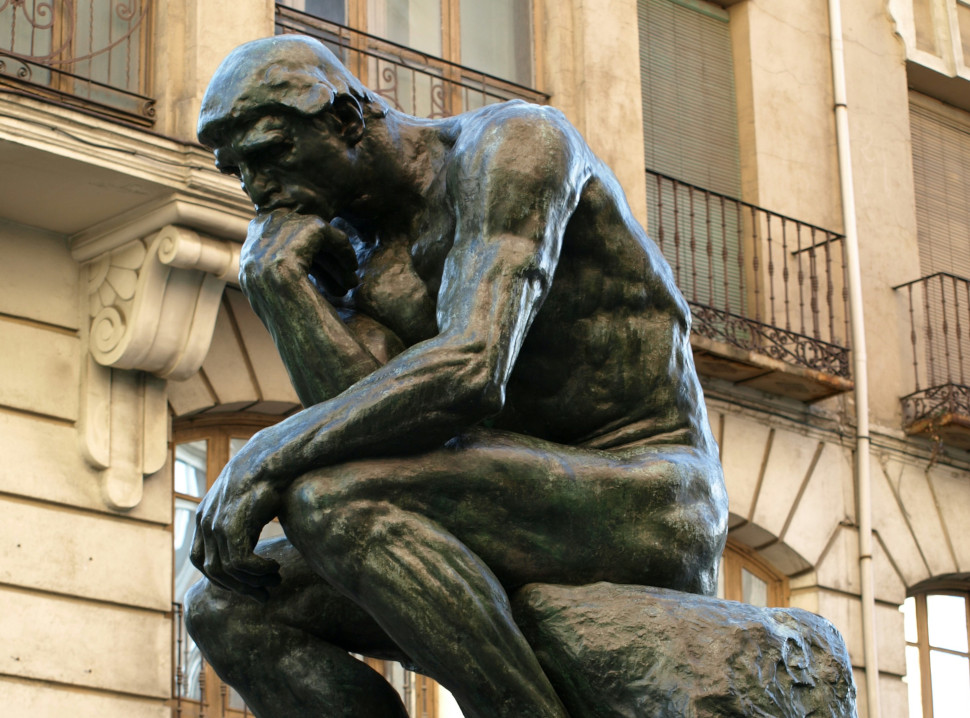
Why moving fast means thinking slow
In a world of enterprise tech, pace is mistaken for progress. We move fast because everyone and everything else is.
If I think to a time prior to computers commonly in homes and businesses, life felt slower, granted there’s some heavily rose tinted glasses there. But there has been a distinct upturn in pace as humans play catch up to technology. As systems, operating systems, applications and platforms were introduced to our lives and ways of working, things felt faster, processes that use to take hours were now taking 10’s of minutes or less.
It feels like we’re at the foothill of the second wave of this with AI. Whether the bubble bursts, deflates or becomes an essential aspect to our lives will be played out for us all to watch (and play a role in).
Regardless of this new tech and the change to us, we remain as the squishy thing with grey matter, and the vital skill we still possess is critical thinking. However, as essential as this is, it can get lost or deprioritised in the pursuit of efficiency.
The irony of the intelligent era
This was written in the back end of 2025 and AI is here being used on a day to day basis, in the workplace it can summarise, predict and optimise faster than we as humans can blink, we can’t compete. But, if we are not careful it can also amplify our blind spots.
If we put aside the more extreme hallucinations of AI (which interestingly has been proven by OpenAI to be a mathematical probability - we’re not developing our way out of these…). If we accept the outputs of AI models, dashboards or algorithms without interrogation, the risk of automating bias at scale is real.
The irony is, as the models become more advanced and, dare I say it, “Intelligent”, then us humans need to become more thoughtful, not less, what we bring to the party is reasoning, context, judgement and ethics – these are the things that machines cannot replicate…for now.
Relating to my journey, as a software engineer, I was trained to optimise, to remove ambiguity and to find the “right” answer. But as I moved into leading teams, I learned that critical thinking looks very different at this level to what I was used to and had to evolve.
Debugging the mind
When developing software, debugging is the process of running, observing and identifying errors in logic, writing tests to cover the many situations within software, it’s painstaking but necessary.
The act of critical thinking is exactly the same but applied to the human brain.
For example, that might be when we interpret data that supports our view and ignore what doesn’t, that is confirmation bias. Or when we rely on gut feel because it’s faster, that’s the equivalent of skipping the test suite. If we’re doing these things then we’re not adopting critical thinking.
One of the early mistakes I made with this was the estimation trap “yes the team are able to deliver this by X”, but as I quickly learned the non-coding/development dependencies of the business blew that out the water. I was going with my gut, with what I knew best: the technical. Suddenly my consideration was forced to be spread wide.
Or building what the users said they wanted instead of solving their actual problem, or pursuing the technically interesting problem rather than the business-critical one. Or ignoring warning signs about a project because so much had been invested (sunk cost fallacy) - I appear to have many lessons ![]() .
.
All these examples were bad decisions because they lacked proper reasoning, context or judgement, best described as unexamined thinking. I’ve learned that critical reflection needs to be part of the process not an afterthought.
The platform mindset and the thinking layer
Keeping with the software development theme, within any robust technology platform is a well-defined architecture, it has clear boundaries, interoperability and governance. Critical thinking is the architecture layer of human judgement.
In software when we skip design principles the system becomes brittle, skipping critical thinking makes organisational decisions brittle too.
Slow thinking for fast times
In order to move fast sustainably, you have to think slow. Far more intelligent psychologists than I, described two modes of thought:
- System 1: which is fast and intuitive
- System 2: which is slow and deliberate
If we think about our working world, the majority of our tasks are consumed with System 1 - instant messaging, emails, dashboards, quick calls or even back-to-back calls. But the decisions that shape platforms, culture or strategy deserve System 2.
My mental checklist:
- What are the assumptions?
- What is the evidence that supports this?
- Who isn’t in the room that should be?
- What if we are wrong?
Not blockers to the process, more guardrails to better thinking. It shifts from “What should we do?” to “How do we know this is right?”
The human edge
Technology will continue to handle execution, but judgment, ethics, and reasoning remain human territory.
The next phase of our digital evolution (not “transformation” that suggests an end or we’re working to complete something) won’t be defined by who has the most data or the fastest tools (although they will help), but by who thinks best about what the data actually means.
Closing thoughts
There isn’t a methodology (that I’m aware of) to embrace and develop critical thinking, it’s a habit you adopt. But making time to question the reasoning is only a small act of curiosity, and that might be the most powerful tool in our arsenal as squishy humans in the new age of AI.